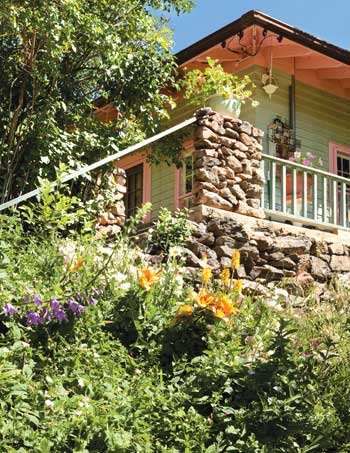It’s Good to be Green
27 Mar 2012
An energy audit is one of the best ways to green your home, because it gives you ideas you never would have dreamed of to improve your home’s carbon footprint.
By Carol Brock Photos By WEINRAUCHPHOTOGRAPHY.COM When I contacted EnergySmart to do an energy audit of our 40-year-old home, I felt good. Who doesn’t want to save money on utility bills? But I was equally interested in having an audit because I think it’s the right thing to do. I mean, why waste energy if you don’t have to? But on the day of the audit, I started to freak out. The auditor is going to spot all my home’s energy imperfections, I worried. Like a dryer that takes two 70-minute cycles to dry anything, the few remaining single-pane windows, an old fridge in the garage, the plugged-in coffeemaker, toaster oven and microwave, a front door with a minor hole in it, and oh JEEZ…the 40-year-old Frigidaire oven (that’s also resplendent in its original orange color)!So in the days approaching the audit, I felt smug in the knowledge that we were about to reduce our home’s carbon footprint. We were looking pretty good, I shrewdly surmised, because we’d already replaced nearly every light bulb with CFLs, installed an energy-efficient air conditioner and low-flow showerheads and toilets, and replaced most of the old aluminum -single-pane windows with double panes.
- The camera pinpoints cool spots (the purple nose on Fritz the dog) and hot spots (his yellow eyes and orange body) to determine the areas of a home that leak heat.

- An energy audit entails setting up a red “blower door” over a home exit to determine the airflow coming into and out of the home. This lets the auditor know if the home conforms to the standard for its size, or if too many leaks are making the residence energy inefficient.
Do What You Can When You Can
The most egregious leak—and this is true of a lot of homes, Dan told me—was around the attic hatch doors. “Attics are nasty places,” he informed me. “They’re super-hot in summer and freezing cold in winter.” Proper insulation, therefore, is critical. Although my attic originally had 8 inches of rock-wool insulation rated R-13, “which was fairly high for 1972,” Dan noted, the owners added another foot of blown-in fiberglass in the early ’90s. It’s rated R-32, but the attic could use another foot to achieve the recommended standard of R-49. Dan has another philosophy that I appreciate as a homeowner in rough economic times: “You do what you can when you can.” That means, although I may need a new furnace and more insulation, I could just spend $40 for outlet insulators, weather stripping and a boatload of caulk, and get to the big-ticket items when I can afford them.Until I find an extra thousand dollars to plump up the insulation, I could go a long way toward energy efficiency just by lining the hatch doors with the weather stripping Keith knew I was going to need. EnergySmart is a great program, in that they inform you of all the options, big and small, and don’t push anything on you or try to sell you something. Dan’s an independent auditor whose only job is to perform energy audits. He’ll prioritize five energy fixes for my home and it’s for me to decide which ones to implement. “We don’t want to overwhelm homeowners with a thick manual and giant reports that will get thrown in a drawer and then nothing gets done,” Dan told me. “Let’s attack those few things that are going to make the biggest impact.” The audit costs just $120, and you even get stuff like CFL bulbs, weather stripping, showerheads, a radon test kit and pipe insulation. But you must be a Boulder County resident to participate. As an EnergySmart advisor, Keith will take Dan’s data and give me recommendations. If I decide to do anything that requires a contractor, Keith will provide a list of certified contractors who are enrolled to work in the EnergySmart program, and whose work must conform to the Building Performance Institute standards. He’ll also inform me of any rebates I’m eligible for, and even fill out the paperwork for me. Keith and Dan didn’t mind us tagging along with a lot of questions, whereas other homeowners may prefer to work at their computers while the auditor and advisor do their work. Either way is fine with them. So all my worry was for naught. Dan said our remaining single-pane windows, which we’d already gotten a $3,000 estimate to replace, weren’t so bad after all. They were well installed and don’t leak, so he suggested energy-efficient blinds instead. “High-efficiency blinds aren’t cheap,” Dan said, “but they’re cheaper than new windows.” Energy efficiency is also a quality-of-life issue that needs to be weighed accordingly. The dog door is a perfect example. Although a dog door is largely energy inefficient, it performs a valuable service. “We won’t tell you to replace the dog door,” Dan said, “because then you’ll have to get up and let the dog out. Our goal is energy efficiency, not to make your life miserable.”
- After an EnergySmart energy audit, the advisor details options for improving the home’s energy envelope.















